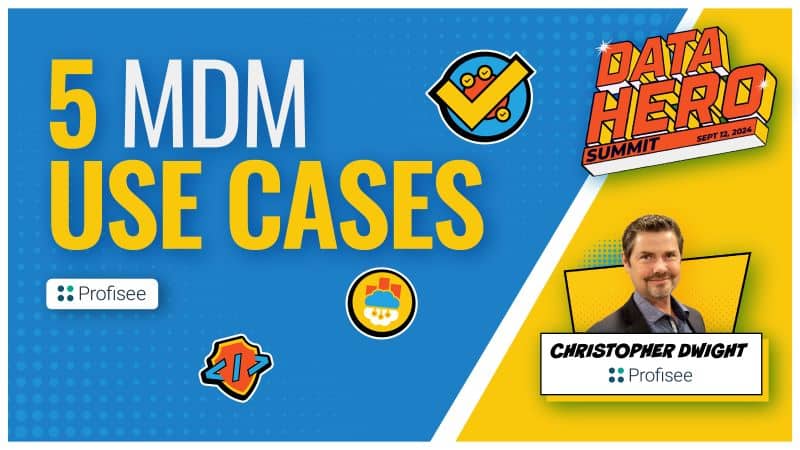When it comes to your organization’s own digital transformation journey, it can be fairly difficult to get things started on the right foot.
According to a 2022 Gartner report, only 35% of board directors have achieved or are on track to achieving their digital transformation goals. As startlingly low as that number is, it shouldn’t come as a huge surprise that enterprises are struggling to keep up with the ever-expanding role that digital technology plays in driving success for so many business growth strategies.
Reinforcing this trend is a 2023 report from Harvard Business Review that states that the average failure rate of digital transformations failing to meet their original objectives is 88%. However, the real question is: Why are so many digital transformations failing to meet expectations in today’s modern business landscape?
Digital transformation is often defined as using data to completely reimagine a way of doing business. The outcomes can vary across organization size or industry (including becoming more operationally efficient or reducing compliance risk), but it often starts with reimagining a customer or employee experience.
When building your transformation journey on trusted data and setting it up for success, it’s important to understand the key components of the journey and the reasoning behind it all.
What is Data-driven digital transformation?
A truly data-driven digital transformation refers to the process of leveraging enterprise data to enhance an organization’s operational efficiency and customer experience with the intention of growing the business and delivering substantial value. According to another Gartner report, data and analytics are the key accelerants of a company’s digitization and transformation efforts.
The report goes on to also state that fewer than 50 percent of documented corporate strategies mention data and analytics as fundamental components for delivering enterprise value. With a staggeringly high percentage like that, it’s no surprise that so many enterprises are struggling to lead a successful digital transformation journey. Without trusted data at the foundation of it all, businesses struggle with inefficient operations and an inability to target their most profitable customers while remaining vulnerable to significant changes in consumer and market demand.
In today’s ever-changing marketplace, a successful transformation requires high-quality data that comes from a modern approach to data management. Embarking on a digital transformation journey without reliable enterprise data is like driving a car without oil. It’ll move you forward, but it’s only a short matter of time before it burns out and stops you in your tracks. But before enhancing your data quality, it’s important to understand why it remains such a crucial component for transforming your business.
Why is Data Important in Digital Transformation?
Once you have decided to take the leap into building your organization’s digital transformation around trustworthy enterprise data, it’s crucial that you’re aware of the “why” behind this decision before proceeding. It’s important for your journey to have a roadmap, but you also need to be knowledgeable about your destination.
Here are four major reasons why your digital transformation needs to be data-driven:
1. Informed Decision-Making
High-quality data provides valuable insights that inform the major decisions you make within your business. Leveraging critical enterprise data is the key to driving a profitable business strategy. It is never wise to base your strategic initiatives on simple intuition, but rather on hard evidence to support your reasonings. Your business outcomes rely heavily on those initial decisions.
Making data-driven decisions enables your business to:
- Minimize the risks that come from ill-informed decisions and/or poorly constructed strategies
- Optimize business processes by focusing your time and efforts on more profitable endeavors
- Identify new revenue opportunities based on high-end reporting and analytics
2. Enhanced Customer Experience
Naturally, extensive analysis of customer data provides a deeper understanding of your customers. It is the customer data that provides organizations with a stronger grasp on their behaviors, preferences and buying patterns. Knowing this information is key because it unlocks several customer engagement opportunities that deliver win-win situations between them and your business. This boosts customer retention by enhancing customer satisfaction and loyalty.
With a broadened, 360-degree view of your customers, you can:
- Personalize the customer experience to better fit their needs
- Tailor products and services to satisfy demand
- Deliver targeted marketing campaigns that pinpoint preferences based on previous transactions and market trends
3. Improved Operational Efficiency
Digital transformations streamline operations and improve overall efficiency. However, driving the transformation process by leveraging strong data and analytics allows your organization to identify bottlenecks, optimize workflows and automate internal tasks, ultimately improving processes and optimizing resources.
Once all is said and done, your organization will increase productivity while reducing the associated costs due to better-targeted operations. Some of the biggest ways in which a data-driven transformation improves efficiency and productivity include:
- Automated systems and processes to reduce human error and save time
- Predictive maintenance so you can anticipate oncoming equipment needs
- Real-time monitoring and alerts to address issues more promptly
- Supply chain optimization by improving demand forecasting and inventory management
- Employee productivity by informing workers where to focus their efforts or develop their skills
4. Increased Competitive Advantage
Another huge gain when effectively leveraging high-quality data is the market advantage over your competitors. In today’s digital age, gathering and utilizing analytical data is far easier than ever before and that is how organizations make their mark to stand out against the competition standing in the way. It is crucial to avoid blending in with those around you.
Strong reporting and analytics provide helpful insight into market trends and reveal key areas for differentiation enabling you to identify emerging opportunities and leave a lasting impact. Data-driven initiatives often foster a culture of continuous improvement for many organizations, which can then grow throughout the business. Reliable enterprise data opens the door for informed, agile innovation so that you can stay ahead of your competitors.
How to Launch a Data-driven Digital Transformation
Launching a data-driven digital transformation within your organization is far easier said than done. While it can exponentially grow your company and enable you to reach your business goals, this all hinges on your data’s actual quality. If the data isn’t there, then neither are the desired outcomes. The bottom line is that it is impossible to expect your business to thrive without an accurate, trusted data source. This requires a modern approach with master data management (MDM).
MDM cleans and centralizes your enterprise-wide data while harmonizing it across multiple systems to ensure a single source of high-quality data you can trust to support your business needs. It standardizes your most critical data across your entire organization delivering accurate, consistent, structured and unified information. Having and maintaining a strong data foundation allows you to launch your strategic initiatives. Leveraging poor data is not an option if you plan on reinventing your business.
Learn How Multi-Domain MDM Benefits Your Digital Transformation
You can’t have a successful digital transformation without clean, trustworthy data. A multi-domain MDM solution helps you grow your business by starting with its core, foundational information. Deliver significant business value by leveraging accurate and consistent customer, vendor, product and asset master data.
Read the full article to learn more about how to achieve your strategic business goals with multi-domain MDM for your digital transformation journey.

Forrest Brown
Forrest Brown is the Content Marketing Manager at Profisee and has been writing about B2B tech for eight years, spanning software categories like project management, enterprise resource planning (ERP) and now master data management (MDM). When he's not at work, Forrest enjoys playing music, writing and exploring the Atlanta food scene.















